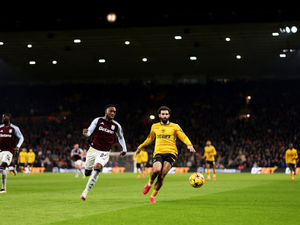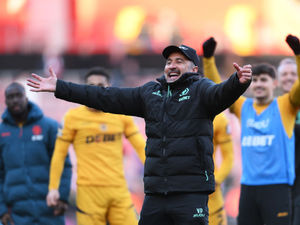Johnny Phillips: Let the train take the strain for best away days
TRAINS
This column is being penned on the 09:30 Avanti Trains, London Euston to Wigan North Western service. From Wigan North Western it’s a couple of strides out of the station and across the street to Wigan Wallgate where the Northern service to Kirkby can be caught. Once at Kirkby it’s a 25-minute walk to Liverpool’s training ground, before catching up with Joel Matip for an interview. On the return journey it’s a slightly different route: the Merseyrail service from Kirkby to Liverpool Central, a five-minute walk up past St John’s Precinct and then a Liverpool Lime Street train back down to Euston.
Any away, or exiled, supporter who travels by rail to matches will recognise the planning that goes into a trip. Football and trains are inextricably linked. Each weekend the national rail network carries thousands of supporters all over the country. It has become a ritual that, depending on the result, can be as enjoyable as the match itself.
The camaraderie and shared experiences speak for themselves. It was the 1927 FA Cup Final between Cardiff City and Arsenal at Wembley that first introduced the idea of mass transportation of football supporters by rail. Fifty trains were run by Great Western Railway to take Cardiff fans to London. The 1970s and 1980s represented the heyday of the Football Special – trains specifically chartered to carry fans to matches. British Rail would use their shabbiest rolling stock to fulfil the demand, fully aware that there was a likelihood carriages could get trashed during an era when hooliganism played a major part of an away day. West Ham’s Inter City Firm drew its name from their mode of travel to away games.
Many supporters undertake long distance journeys to home games, too, and trains have become an integral part of the experience. London Wolves have been using the rail network for fifty years, taking advantage of discounts available for group bookings of ten or more passengers when heading up to Wolverhampton and elsewhere from the capital. In 1979 a midweek League Cup trip to Grimsby Town went down in folklore when 38 of their members embarked on a voyage that lasted until 6:30am. The return journey from Blundell Park involved a two-hour wait to change trains at Doncaster, where the traveling fans found a local nightclub to pass time in, before making their connection back to Kings Cross in the early hours. The game ended 0-0, by the way.
The joy of the train is that it drops you right in the heart of whichever city you are visiting. Unlike coach or car travel there is none of the tedious crawling through traffic jams along clogged arteries into town. Supporters can arrive at their destination hours in advance and enjoy the surroundings before taking in a match.
Although this can have its drawbacks when fans of different clubs arrive in one city. The Euston Flyer pub earned a reputation as a destination for rival fans arriving in London from the North and Midlands. And London Bridge can be a lively location when home and away fans heading to and from south-east venues like Charlton, Millwall and Crystal Palace converge at the same time.
For many professional football clubs, the train is a preferred mode of transport to away games. Premier League teams often reserve entire first-class carriages on long journeys. Few teams can have travelled more quickly to a game than the Wolves players during the 2019 Premier League Asia Trophy tournament in China. The famous Bullet train took just an hour to complete a 190-mile journey from their base in Shanghai to a fixture in Nanjing, against Newcastle United. That’s about ten minutes less than it takes to get from Birmingham to Shrewsbury on a West Midlands Trains service.
Perhaps there is no closer relationship between football and trains than at Cierny Balog Stadium, home of amateur club TJ Tatran Cierny Balog, in Slovakia. It is here that the narrow gauge Cierny Hron Railway passes through the ground, with the tracks running in between the main stand and the pitch. It is not uncommon for steam trains to chug through the venue during matches. Quite rightly, the trains are given unfettered access through the ground as the railway line was built first, in 1909, with the football pitch laid some years later.
Today’s train destination is Swansea City, to cover a Championship fixture against Blackpool for Soccer Saturday. The London Paddington to Swansea train is the UK’s version of the Trans-Siberian Express. Once past Cardiff, the trip becomes and endurance test. Bridgend, Port Talbot Parkway, Neath. Are we ever going to get there? But, of course, it’s far quicker and more relaxing than attempting the same journey down the M4.
Back in the era of the Football Special, British Rail ran an advert with the slogan, “The age of the train.” The standing joke was that the age must be about 80, with its rickety carriages, unreliable services and regular delays. The modern-day privatised version of the network often brings with it those same familiar problems, only with astronomical prices for the privilege. It’s not always easy or cost-effective but, despite the challenges, travelling by train remains a much-loved ritual of a football day out





